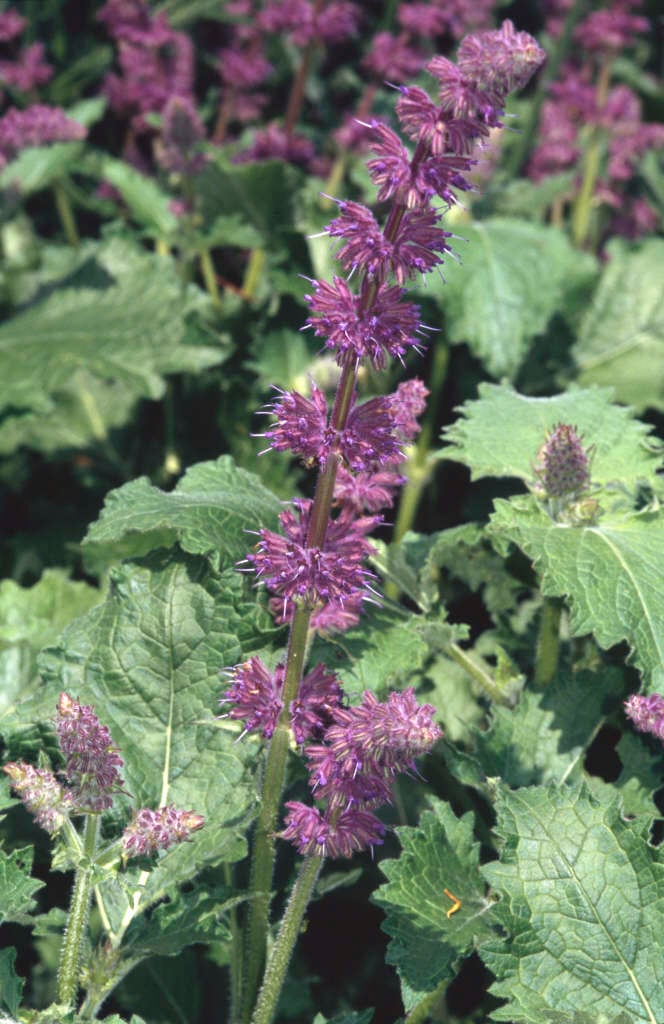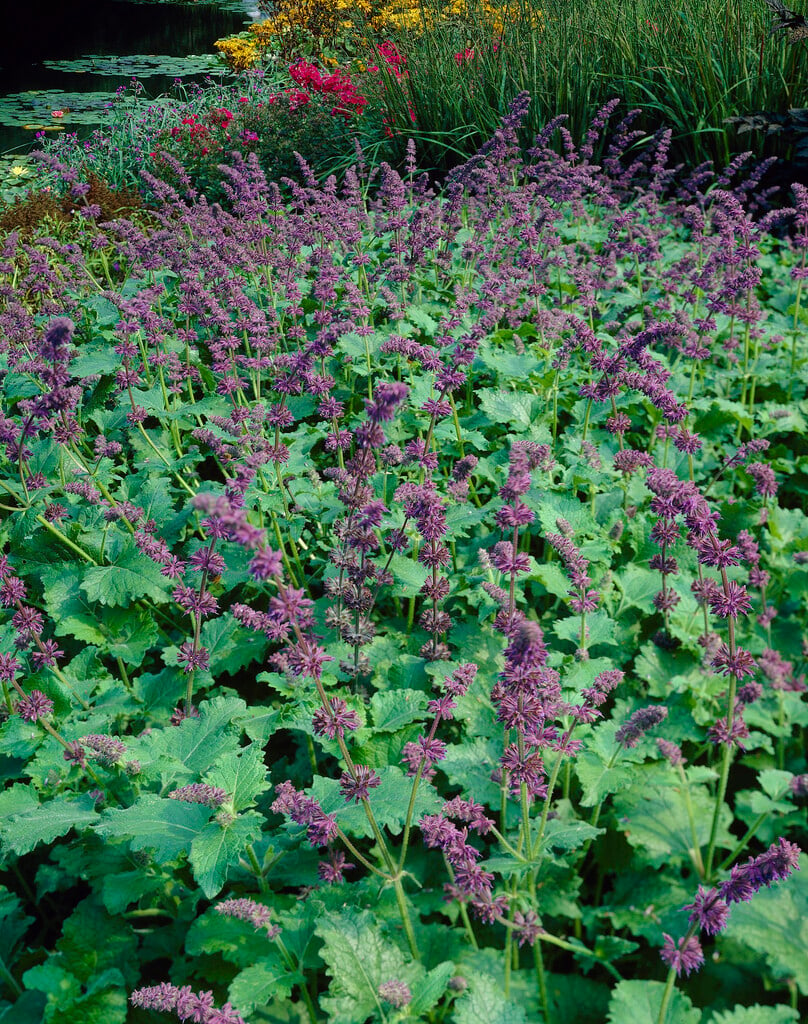Salvia officinalis 'Purple Rain'
whorled clary 'Purple Rain'
An upright perennial with lyre-shaped leaves and small, reddish-purple flowers borne in long, dense, interrupted spikes on reddish stems in summer
Size
Ultimate height
0.5–1 metresTime to ultimate height
2–5 yearsUltimate spread
0.1–0.5 metresGrowing conditions
Moisture
Well–drainedpH
Acid, Alkaline, NeutralColour & scent
| Stem | Flower | Foliage | Fruit | |
| Spring | Green | |||
|---|---|---|---|---|
| Summer | Purple | Green | ||
| Autumn | ||||
| Winter |
Position
- Full sun
Aspect
West–facing or South–facing
Exposure
Sheltered Hardiness
H5Botanical details
- Family
- Lamiaceae
- Native to GB / Ireland
- No
- Foliage
- Deciduous
- Habit
- Bushy
- Genus
Salvia can be annuals, biennials, herbaceous or evergreen perennials, or shrubs. They have paired, simple or pinnately lobed, often aromatic leaves and 2-lipped flowers in whorls, forming simple or branched spikes or racemes
- Name status
Accepted
How to grow
Cultivation
Grow in well-drained soil and full sun with shelter from cold, drying winds
Propagation
Take basal stem cuttings in late spring; stem-tip cuttings in late summer or in early autumn and propagate by division in spring
Suggested planting locations and garden types
- Coastal
- Cottage and informal garden
- City and courtyard gardens
- Gravel garden
- Mediterranean climate plants
- Wildlife gardens
- Flower borders and beds
Pruning
Cut back faded flower spikes to prolong flowering
Pests
May be susceptible to slugs, snails, aphids, capsid bug, leafhoppers and rosemary beetle
Diseases
May be susceptible to honey fungus (rarely), powdery mildews, verticillium wilt and foot and root rots
Love gardening
Sign up to receive regular gardening tips, inspiration, offers and more
View our Privacy Policy
Get involved
The Royal Horticultural Society is the UK’s leading gardening charity. We aim to enrich everyone’s life through plants, and make the UK a greener and more beautiful place.

